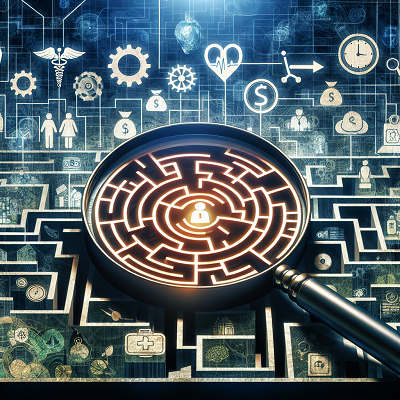Introduction: The Power of Patterns
Patterns are ubiquitous in our world, forming the backbone of how we understand and interact with our environment. In the realm of data analysis, pattern detection stands out as a critical tool, enabling us to make sense of vast datasets and glean actionable insights. This capability is not just about recognizing shapes or sequences; it’s about understanding the significance of these patterns across various contexts, from predicting weather changes to diagnosing diseases. The importance of patterns in predictive analytics cannot be overstated, as they help us anticipate future events with remarkable accuracy.
Revolutionizing Healthcare with Pattern Detection
In healthcare, the early and accurate diagnosis of diseases can save lives. Pattern detection plays a pivotal role in this, enabling medical professionals to identify diseases earlier than ever before. By analyzing patterns in patient data, symptoms, and test results, diseases can be diagnosed with a precision that was previously unattainable. Furthermore, pattern detection is at the forefront of personalized medicine, where treatment plans are tailored to the individual, based on the unique patterns of their biology and disease progression.
Enhancing Security Measures Through Patterns
Cybersecurity is another field profoundly impacted by pattern detection. By analyzing data patterns, cybersecurity systems can identify potential threats and vulnerabilities before they become critical issues. Similarly, in physical security, pattern recognition technologies are employed in surveillance systems to detect unusual behaviors or activities, significantly enhancing public safety and crime prevention efforts.
Optimizing Financial Markets with Pattern Insights
The financial sector benefits immensely from pattern detection, especially in stock market analysis and fraud prevention. Investors and financial analysts use pattern recognition to predict market trends, making informed decisions that maximize returns. Banks and financial institutions leverage these technologies to detect fraudulent transactions and manage risks, safeguarding both their assets and their customers’ investments.
Improving Customer Experiences in Retail
In the retail industry, understanding customer behavior and preferences is key to success. Through pattern detection, retailers can analyze shopping behaviors, tailoring marketing efforts to meet the unique needs of their customers. This personalized approach not only enhances the shopping experience but also optimizes inventory management, ensuring that popular products are always in stock.
Advancing Environmental Conservation Efforts
Pattern detection is a powerful ally in the fight against environmental degradation. Climate scientists use these technologies to model environmental changes, predicting phenomena such as storms or droughts with greater accuracy. Wildlife conservation efforts also benefit from pattern recognition, which can be used to monitor animal populations and detect poaching activities, helping to protect endangered species.
The Future of Pattern Detection: Beyond the Horizon
The potential applications of pattern detection are boundless, extending into emerging technologies and fields that could transform our world. From improving urban planning and transportation systems to advancing space exploration, the ability to detect and analyze patterns will continue to solve complex global challenges, enhancing the quality of life for all. As we look to the future, it’s clear that pattern detection will play a pivotal role in shaping the next frontier of human innovation.
In conclusion, the impact of pattern detection across various industries highlights its significance as a transformative tool in our increasingly data-driven world. By unlocking the potential of patterns in data, we can revolutionize healthcare, enhance security, optimize financial markets, improve retail experiences, and advance environmental conservation efforts, paving the way for a future where data-driven insights lead to smarter, more efficient, and more personalized solutions.



